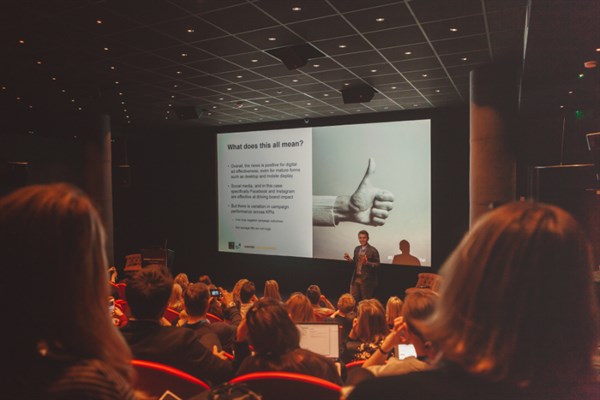New research released by Saїd Business School (University of Oxford) and Kantar at an event in London last week reveals that social media advertising can be a highly effective channel for driving long-term brand impact, and the most successful brands will be the ones who appear most ‘human’.
The research
Andrew Stephen, L’Oréal Professor of Marketing, and his colleague, Felipe Thomaz, Associate Professor of Marketing at Saïd Business School, examined Kantar Millward Brown data from Facebook and Instagram advertising campaigns over the last two years, looking at longer term brand measures such as awareness and affinity, rather than short term clicks or sales measures.
In the first research study of its kind, the team examined 235 global campaigns from 110 different brands, using proprietary data from campaign effectiveness polls carried out by Kantar. These campaigns were 80% video (vs 20% display), and all mobile. Natural Language Processing provided additional analysis of the brands’ own Facebook posts.
The results
The team found that there is no strong correlation between campaign success and factors such as industry category, region, or the number of creative formats used in a campaign. However, those brands who communicate using human language, tapping into people’s emotions and avoiding more functional words and phrases, tend to perform better in advertising effectiveness, on brand metrics such as aided brand awareness, ad awareness and aided product awareness.

Desktop vs Mobile
Saїd Business School also carried out an additional meta-analysis of Kantar’s broader digital effectiveness data (Marketnorms). This looked at over 8,800 global campaigns across many digital channels, to gauge the impact of desktop vs mobile advertising on brand metrics over the last 7 years. It shows that whilst brands are now spending more on mobile advertising than desktop advertising, it is equally as effective in terms of brand impact.
Mobile display effectiveness now shows an average lift across brand metrics of 3.8%, slightly below that of desktop display.
What brands can learn
At a time when some of the world’s largest advertisers are questioning the efficacy of digital advertising, many are under pressure to show returns from social media spend. This study shows that a long-term return is possible – if social media advertising is done well.
Key findings:
- Brand Impact: Social media can drive long-term brand impact, particularly in salience (brand awareness, ad awareness), and most campaigns have a positive impact on brand KPIs.
- Context Matters: Brands that communicate in their own Facebook/Instagram posts using “human” language, tapping into people’s emotions and avoiding the more functional words and phrases, tend to also be those brands that perform well in the brand impact of their advertising.
- Desktop Isn’t Dead: The average lift for brand KPIs on desktop is now the same as mobile, so the ‘new and shiny’ of mobile may have worn off, and desktop is still heavily used for some categories, e.g. travel.
“These findings are hugely important for businesses in understanding how they communicate on social media, with those who interact in a human and emotive manner able to capture greater awareness of their brands and products,” said Andrew Stephen, L’Oréal Professor of Marketing at Saїd Business School.
“The research also delivers useful insight on where advertisers should focus their efforts. With brand impact now delivered equally through desktop and mobile, advertisers must consider more carefully their media mix in order to reach consumers across these channels.”
The shock of the new can wear off, which is one reason why we have seen mobile ad effectiveness drop over time. The mobile environment is more cluttered than before and we know that consumers find some formats irritating. Marketers need to make sure that they try out new formats as they appear, to benefit from the brand lift effect, and they must adopt a test and learn approach. Facebook and Instagram’s continual innovation on their platforms keeps the experience fresh for consumers.
Editor’s notes
Methodology for the study: A detailed analysis of 235 global campaigns (which included 588 KPIs) on Facebook and/or Instagram over the last two years was undertaken, using control/exposed sample provided by Facebook. The broader Marketnorms study involved a meta-analysis of 8,811 digital campaigns on desktop and mobile over the last 7 years globally using a control/exposed methodology. Kantar analysed the data from respondents who answered questions on saliency (awareness), message associations and motivation (intent to purchase).
This work was done as part of Kantar’s involvement in the Future of Marketing Initiative with the Said Business School, working together with other industry partners and the marketing faculty on key initiatives.

